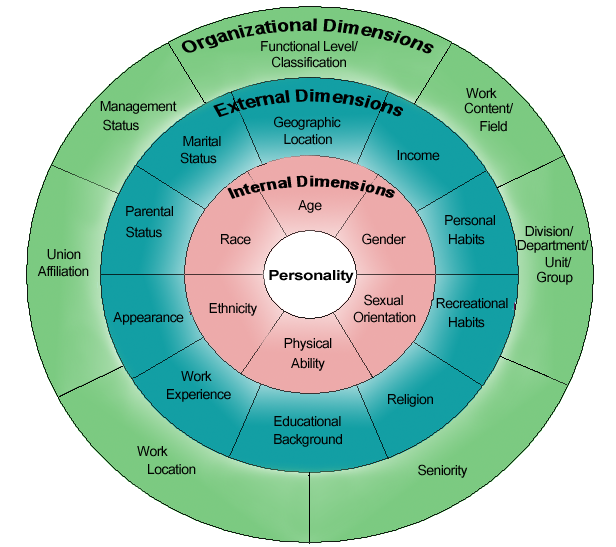Diversity Training Model
In any organization, there is always a laid down structure formulated in order to keep its staff in healthy and stable mind in their duty of serving company’s interest. A stable mind performs optimally with little or no supervision. In line with this, an organization will always work alongside its staff to promote healthy working habits by recognizing and where necessary, supporting staff that make a steady commitment in practicing accepted desirable healthy habits in their work departments.
Periodically, programs are designed in line with objectives and goals on researched conducive work methodology for sustained happy employee-employer relationship. The method used include direct participation by the employees who after interaction with each other, identify hale and hearty workplace interventions passed through a feasibility test for implementation to initiate cultural shift in organization.
Thus, this reflective treatise attempts to explicitly present an organizational model for analyzing diversity in a cultural diversity training program in an organization to promote healthy culture of appreciating diversity. Besides, the model presented contains methods and procedures which are structured to facilitate diversity training program.
By definition, diversity climate in an organization comprises of the perception and attitudes exhibited by members of the organization culture and are directed to persons of diverse background in terms of race, tribe, culture, and views that might be different from their own.
As a matter of fact, these various attitudes and perceptions are evident in the behaviors and practice that an individual or a subculture directs to one another in the process of interaction, accomplishing duties, and performing assigned role. Schneider, Chung, and Yusko (1993) opine that:
Companies have a duty to implement the results of a cultural diversity program by developing and maintain effective diversity initiatives. Another significant aspect is accountability. Besides, Company committees have set up diversity training teams which consist of members of management, division managers, and business resource teams which represent the broad list of minority groups. Networking serves as a solid foundation which helps to foster diversity initiatives. (p. 134)
There are written rule of engagement, expected behavior, and repercussions for misconduct. During diversity training, these rules are clearly presented on a blue print to the organization community in order to appreciate diversity and uphold integrity in judgment. In the process, cases of prejudice are minimized as diversity will develop into a positive aspect of the organization (Schneider, Chung, and Yusko 1993).
Periodically, the organization restructures these goals in consistency with the changing work environment and requirement of its staff. Consequently, when people are absorbed and made to feel part of these goals, they would strive to give their best towards the organization and uphold existing culture with minimal struggle.
In order to design a diversity climate training model, it is vital to factor in the aspects of social circles, cultures, and background of members of the organization culture. This facilitates quality and objectivity in implementing the training. As a matter of fact, boarder perspectives are incorporated in the displayed character of the organization culture.
The first step is to activate the aspect of learning the distinct individual perspectives within subgroups and between intra and inter personal interaction. In the process, the evaluator is likely to classify differences from meaningful revelations established in the environmental culture predominant of the economic, sex, demographics, and race tolerance perspectives.
The next step is to integrate the findings from the first step into the aspects of social and human capital that is quantifiable and can be managed. This is often referred to as “the potential individual contribution to establish strong relationships, communication, working teams an effort to reach a common goal for using crisis for opportunities” (Knicki and Kreitner, 2009, p.89).
The third step is to actualise provision of the diversity program characterized by periodic training. During these sessions, the entire community is expected to participate at individual and group levels. As a result, quantifiable and structure oriented diversity initiatives will surface.
In doing so, the trainer should incorporate the aspect of controlled democracy to protect the micro groups or cultures that may lack numbers (Schneider, Chung, and Yusko 1993). Moreover, uninterrupted attention should be directed towards procedures and practices that are indicates in the diversity training model shown in figure 1 below.

Reflectively the above model indicates intrinsic leadership since strong leadership is the recipe for success. Besides, the aspect of constant and continuous measurement and research into diversity are activated to maintain the gains made in leadership. This includes the achieved education which cultivates and affirms diversity. However, the above requirements are best met when objective follow ups are emphasized to ensure accountability (Knicki and Kreitner, 2009).
Conclusively, leadership, assessment and research, education, and proactive follow ups determine the success of a diversity training program. This will minimize isolation, self-protective mode, and workplace discrimination. As a matter of fact, these aspects assist in the evaluation process and make the training behavior responsive. Besides, this helps to reaffirm the organization culture and promote proactive judgment.
References
Kinicki, A., & Kreitner, R. (2009). Organizational behavior: Key concepts, skills & best practices (4th ed.). New York, NY: McGraw-Hill Irwin.
Schneider, B., Chung, B., &Yusko, K. (1993). Service Climate for Service Quality. Current directions in Psychological Science, 12(2), 197-200.